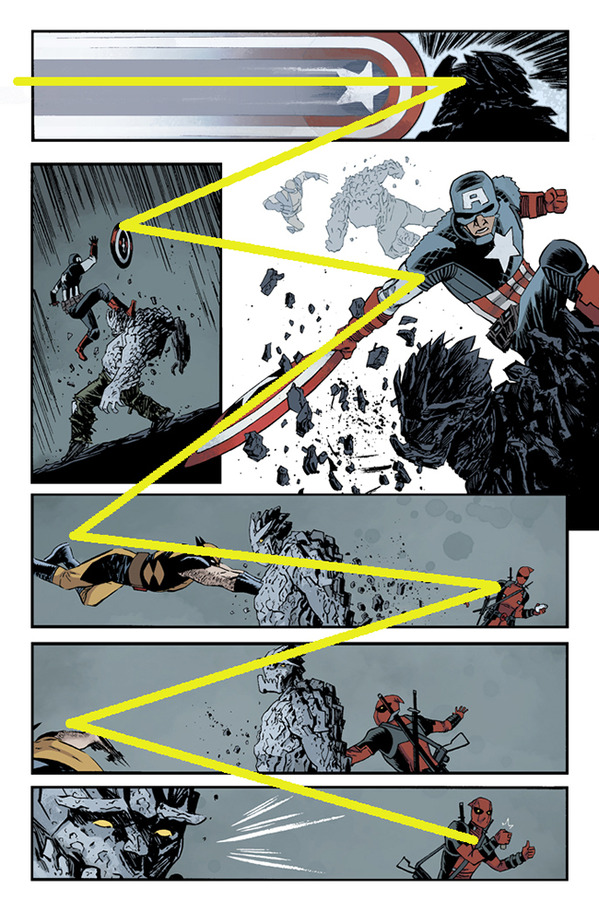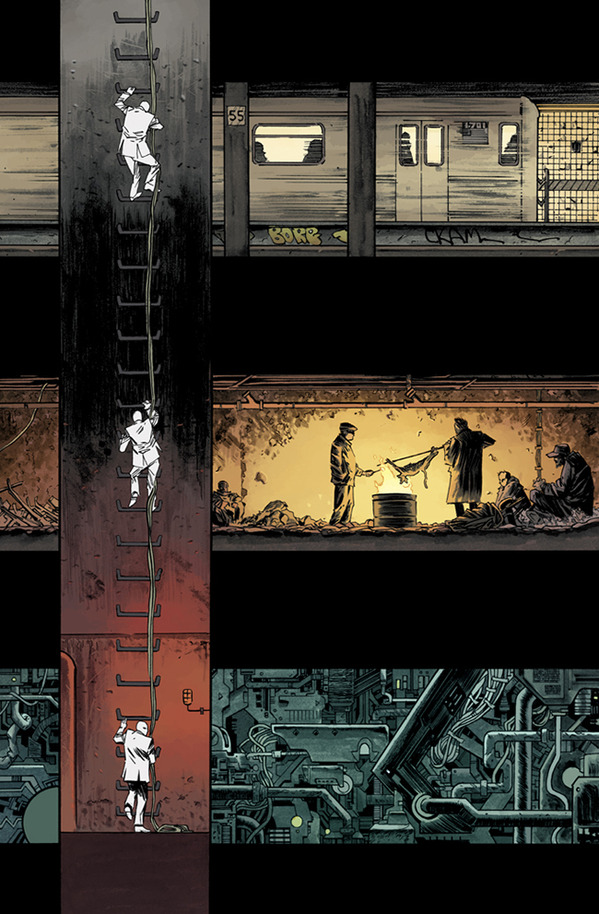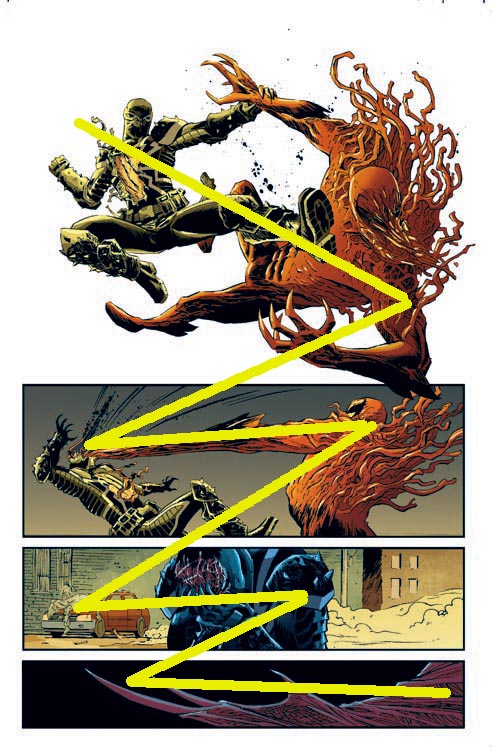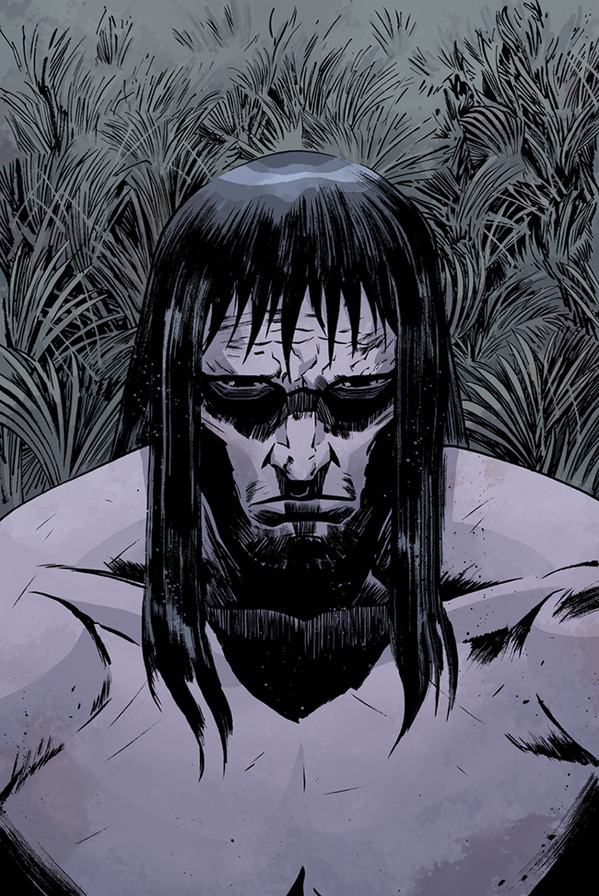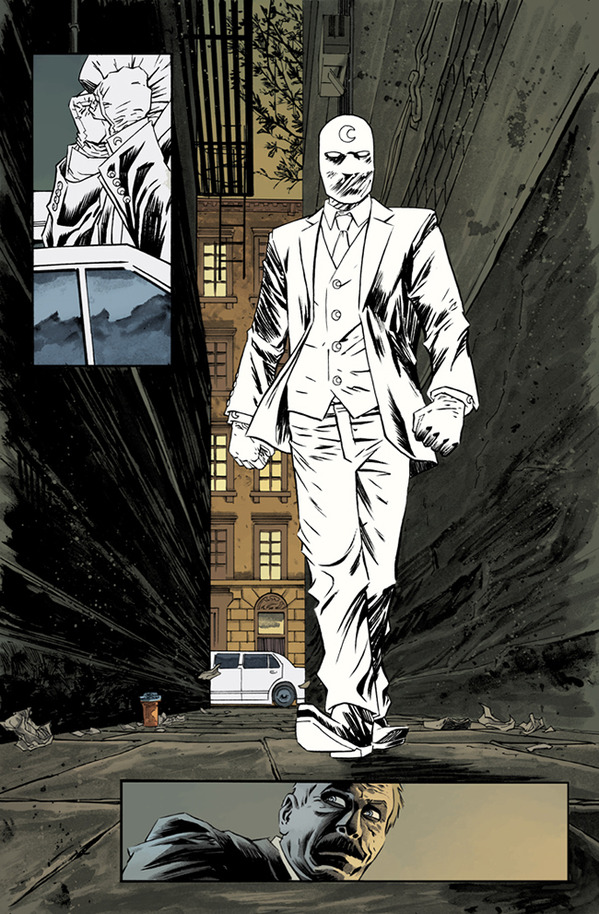State of the Art with Moon Knight‘s Declan Shalvey
Comic art is more than just pretty pictures. Though its job is to keep our eyes glued to the page with dynamic figures and double-page spreads of dazzling action, the art’s most elemental function is to tell a cohesive story. You may find yourself marveling over what you read in a particular comic rather than what you saw. And while comics are a visual medium, art can be silently overshadowed by the volume of words that dominate our focus as we read. Comic book reviewers, too, tend to place more focus on writing and plots, as pointed out by Declan Shalvey, artist on the upcoming reboot of Marvel’s Moon Knight with incendiary writer Warren Ellis.
Shalvey’s critical of the way comics are reviewed and written about: “In so many reviews they’ll look at the story and see the story as something that’s purely written, when without the art, there is no story; it’s just a script.” He acknowledges that there’s an artistic vocabulary that non-artistic readers and reviewers, as writers themselves, tend to lack. “If you’re watching a film, you’re not going to know the frame rate or the aperture. There’s the language you’re not going to understand unless you’re versed in that. I can always appreciate that,” Declan said during a phone conversation from his home in Dublin.
From his early work on the blood-spattered pages of 28 Days Later to the loping action of his runs on Deadpool and Venom, Declan has always put his artistic focus squarely on storytelling. “The most challenging, and rewarding, part of drawing a comic is taking those words on a page and making them images,” he said. “It’s really frustrating sometimes, and you’re banging your head against a wall to make it work. Those are the bits that keep artists awake at night but also make them want to get up in the morning and figure it out.”
That tradition continues on his latest project, in which he teams with Warren Ellis and frequent collaborating colorist Jordie Bellaire to resurrect Marvel’s moon-powered mad man. The lunacy in antihero Marc Spector may be a wonderland for Ellis to craft his psycho-noir plot lines (the more deranged, the better, I always say), but it’s the character’s grit and belly-of-the-beast existence that Declan embraces. Declan was especially drawn to Moon Knight for his identity as one of Marvel’s “street-level characters.” For instance, he’s made no secret that he would love to draw Daredevil or Batman.
So in the interest of making us better comic readers (ed: and reviewers), Declan took a break from toiling away on the monthly Moon Knight to school us on some basic elements of visual storytelling that readers may be neglecting.
Movement and Focus
The artist’s most essential job, Declan says, is to control the reader’s eye, and if he’s done it well, you won’t even know it’s happening. “I remember when I was a kid, sometimes you’d see an arrow from panel one to panel two,” he laughed. “There’s an artist who doesn’t know what he’s doing.”
In the case of illustrating comics, the artist is more or less bound by our instinct to read left to right (though this varies by culture; Manga is read right to left). “You’re basically doing a zigzag though the page,” he explained. “If somebody is flying or punching in a very forward direction, you would try to lead them back from right to left, depending on what you’ve drawn before hand.” He mapped that path for us on this page from Deadpool, diagramming where he intended our eyes to gravitate as we read.
Most striking is the subtlety. The left-to-right directive is obvious in Captain America’s shield, swooshing across the first horizontal panel. “I am very much trying to lead your eye left to right, but in an action way. I could have done it completely differently,” he explained. “If I switched that the other way around, it wouldn’t have made much sense, because you’d see him get hit first, and then you’d have seen where the shield came from.” The sense of motion in this panel, leading us to the point of impact, is plain enough, but Cap’s downward-slanting arm pointing us backward into the panel below is more subtle.
Casting your eye toward the choices an artist makes to capture that movement adds another level to the story. Had I not been looking for it in a page from Moon Knight #1, I would most likely have overlooked the sense of motion before I even knew I felt it. In the issue, the pale vigilante descends into New York’s underbelly, crossing layers of underground life the lower he goes — a subway tunnel, followed by hobos huddled around a bonfire, and deeper still, the industrial techno-guts that power the city. “It takes you down and also takes you across,” Declan said. “I have to point out that was Warren, he wanted that.” But while there’s an almost whimsical air to it, as if he climbed lower we’d see dinosaur bones before he arrived in China, you can see how panel size and placement contribute not only to downward motion but also to a sense of depth. “I could have drawn each one of those panels a lot bigger, had more detail in there. But the way I saw it, it’s more important that you get the feeling that you’re going underground.”
-

-

-

-

-

-

-

-

-

-

-

-

-

-

-

-

-

-

-

-

-

-

-

-

-

-

-

-

-

-

-

-

-

-

-

-

-

-

-

-

